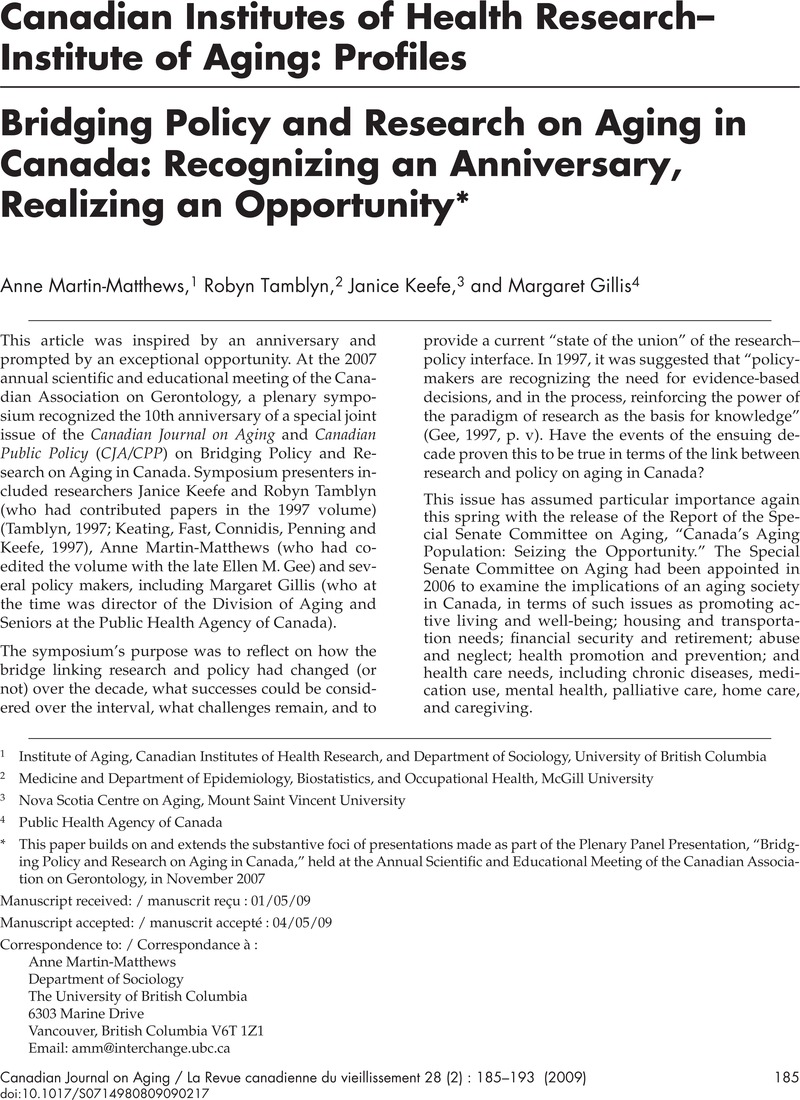Crossref Citations
This article has been cited by the following publications. This list is generated based on data provided by Crossref.
Sadana, Ritu
Blas, Erik
Budhwani, Suman
Koller, Theadora
and
Paraje, Guillermo
2016.
Healthy Ageing: Raising Awareness of Inequalities, Determinants, and What Could Be Done to Improve Health Equity.
The Gerontologist,
Vol. 56,
Issue. Suppl 2,
p.
S178.
Syed, M. Anum
McDonald, Lynn
Smirle, Corinne
Lau, Karen
Mirza, Raza M.
and
Hitzig, Sander L.
2017.
Social Isolation in Chinese Older Adults: Scoping Review for Age-Friendly Community Planning.
Canadian Journal on Aging / La Revue canadienne du vieillissement,
Vol. 36,
Issue. 2,
p.
223.



